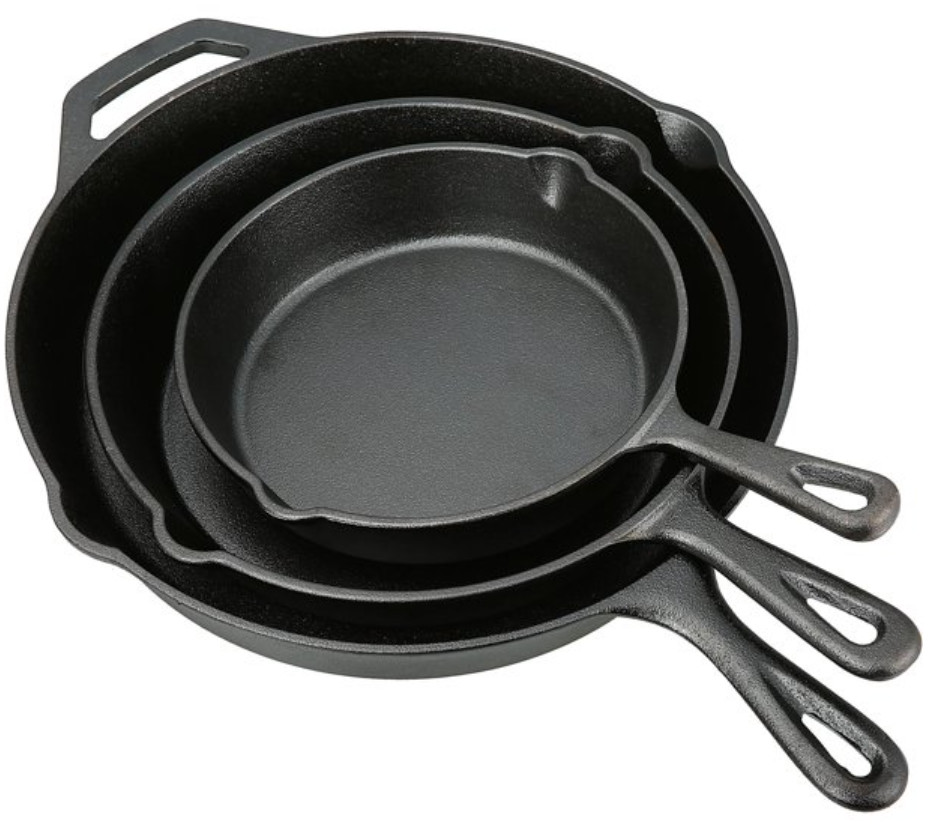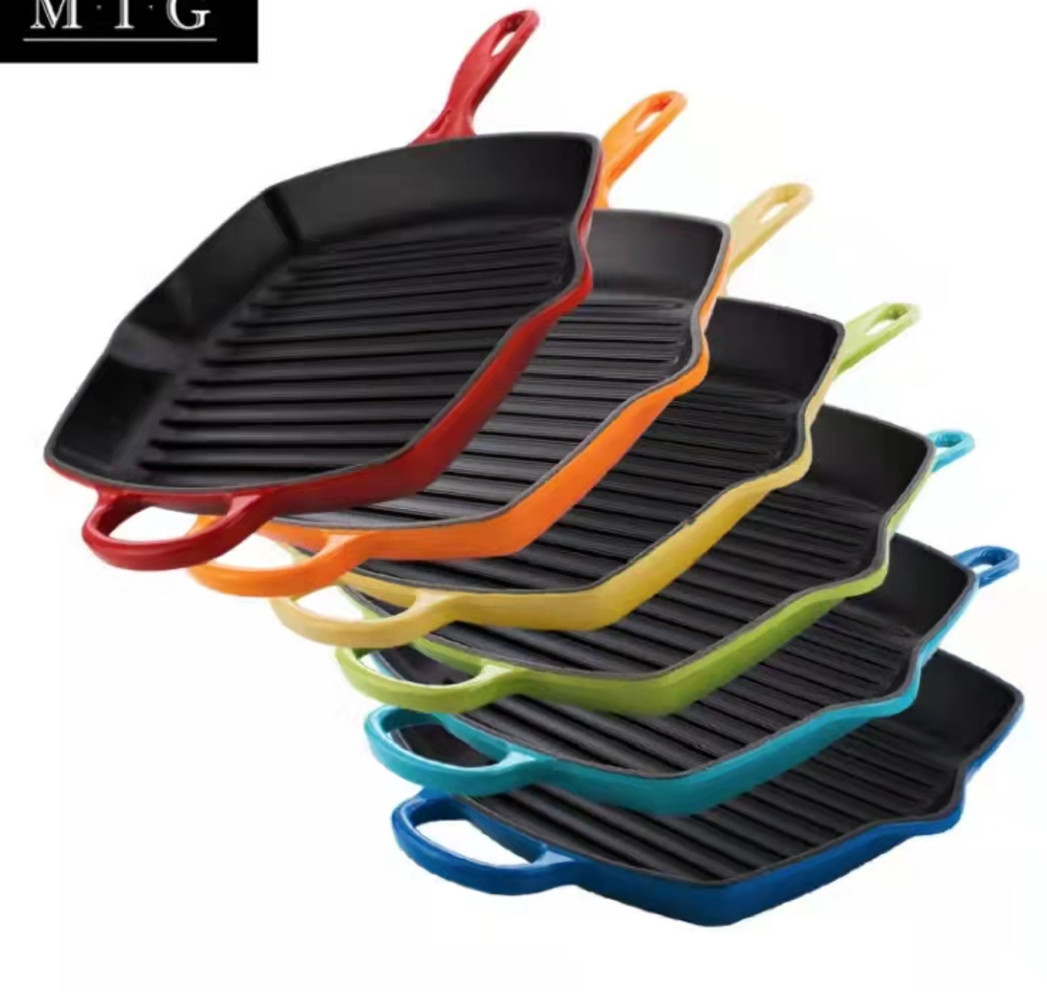- 150m Southwards, West DingWei Road, Nanlou Village, Changan Town, GaoCheng Area, Shijiazhuang, Hebei, Suav
- monica@foundryasia.com
Jun. Peb 12, 2023 18:48 Rov qab mus rau npe
CAST IRON COOKWARE yog dab tsi
Dab tsi yog cam khwb cia hlau cookware:
Cam khwb cia hlau cookware yog hnyav-ua hauj lwm cookware uas yog ua los ntawm cam khwb cia hlau yog muaj nuj nqis rau nws cov cua sov tuav, durability, muaj peev xwm yuav siv tau nyob rau hauv high kub, thiab tsis-stick ua noj thaum lub caij kom zoo.
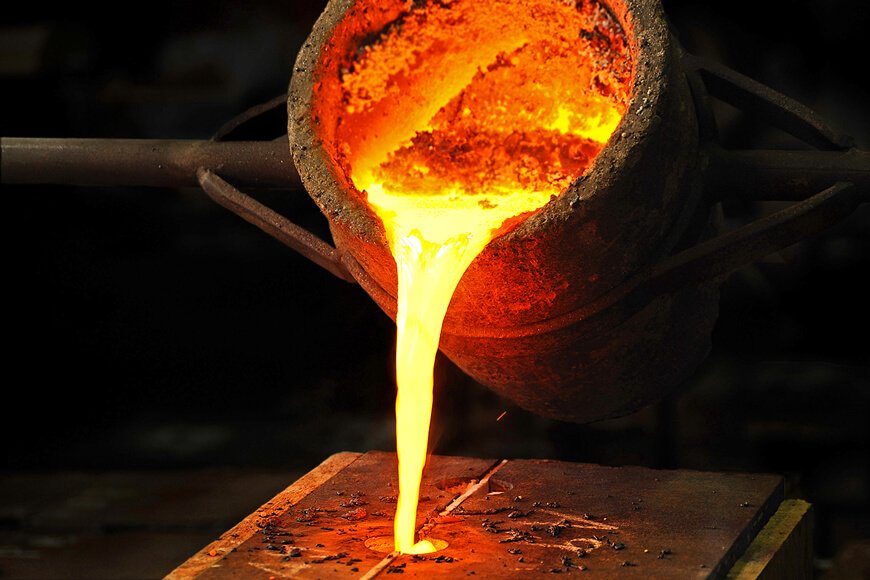
Keeb kwm ntawm cam khwb cia hlau cookware
In Asia, particularly China, India, Korea and Japan, there is a long history of cooking with cast iron vessels. The first mention of a cast-iron kettle in English appeared in 679 or 680, though this wasn't the first use of metal vessels for cooking. The term pot came into use in 1180. Both terms referred to a vessel capable of withstanding the direct heat of a fire. Cast-iron cauldrons and cooking pots were valued as kitchen items for their durability and their ability to retain heat evenly, thus improving the quality of cooked meals.
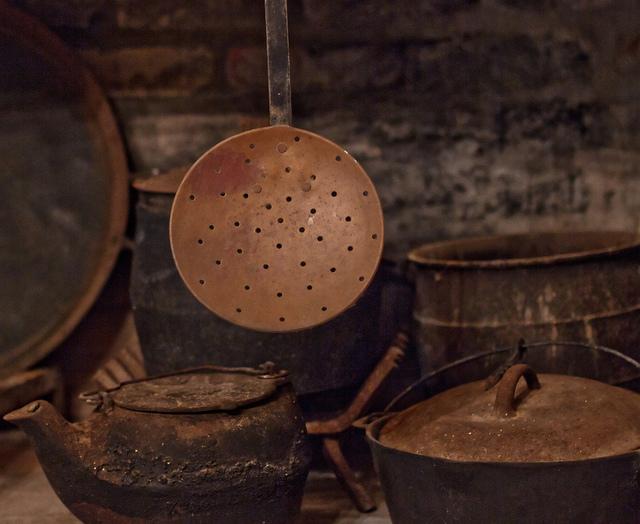
Hauv Tebchaws Europe thiab Tebchaws Meskas, ua ntej qhov kev taw qhia ntawm lub qhov cub hauv nruab nrab ntawm lub xyoo pua 19th, cov zaub mov tau siav hauv lub hearth, thiab cov lauj kaub thiab cov lauj kaub tau tsim los siv rau hauv lub hearth, los yog yuav tsum tau muab tshem tawm hauv nws.
Cast-iron pots were made with handles to allow them to be hung over a fire, or with legs so that they could stand in the coals. In addition to Dutch ovens with three or four feet, which Abraham Darby I secured a patent in 1708 to produce, a commonly used cast-iron cooking pan called a spider had a handle and three legs allowing it to stand upright over campfires as well as in the coals and ashes of a fireplace.
Ua noj lauj kaub thiab lauj kaub nrog legless, tiaj tus hauv qab tuaj rau hauv siv thaum lub qhov cub ua noj ua haus nrov; lub sij hawm no ntawm lub xyoo pua puv 19 pom qhov kev taw qhia ntawm lub tiaj
cast-iron skillet.
Cam khwb cia hlau cookware tshwj xeeb tshaj yog nrov ntawm cov neeg ua tsev nyob rau hauv thawj ib nrab ntawm lub xyoo pua 20th. Nws yog ib qho pheej yig, tsis tau ruaj cookware. Cov tsev neeg Asmeskas feem ntau muaj tsawg kawg yog ib lub lauj kaub tais diav.
Lub xyoo pua 20th kuj pom qhov kev taw qhia thiab nrov ntawm enamel-coated cam khwb cia-hlau cookware.
Today, of the large selection of cookware that can be purchased from kitchen suppliers, cast iron comprises only a small fraction. However, the durability and reliability of cast iron as a cooking tool has ensured its survival. Cast-iron pots and pans from the 19th and 20th century continue to see daily use to the present day. They are also highly sought after by antique collectors and dealers. Cast iron has also seen a resurgence of its popularity in specialty markets. Through cooking shows, celebrity chefs have brought renewed attention to traditional cooking methods, especially the use of cast iron.
Cov khoom tseem ceeb
Hom cam khwb cia hlau cookware muaj xws li frying lauj kaub, Dutch ncu, griddles, waffles irons, panini xovxwm, tob fryers, woks, fondu thiab potjies.
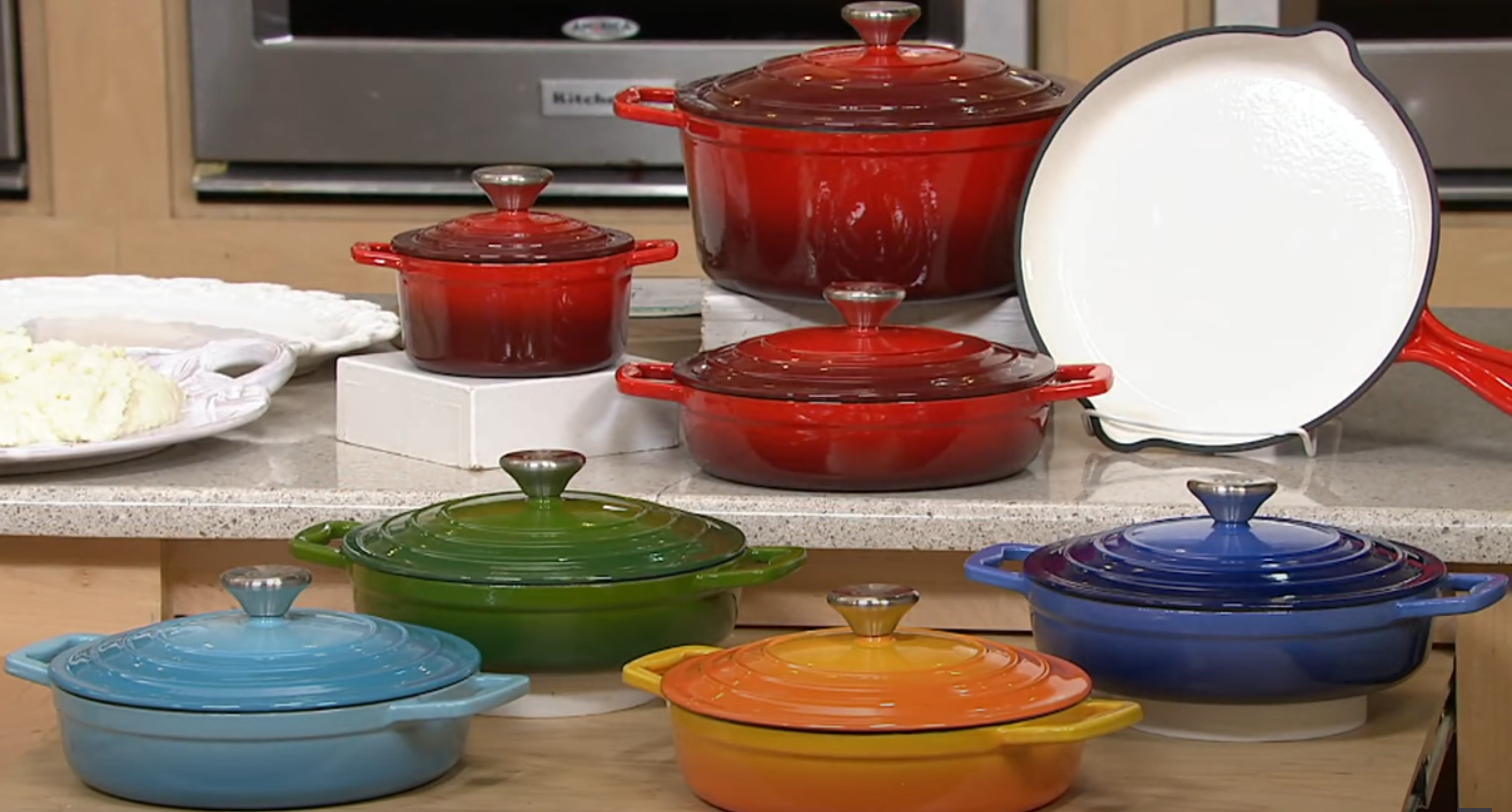
Cov txiaj ntsig ntawm cam khwb cia hlau cookware
Cast iron's ability to withstand and maintain very high cooking temperatures makes it a common choice for searing or frying, and its excellent heat retention makes it a good option for long-cooking stews or braised dishes.
Because cast-iron skillets can develop a "non-stick" surface when cared for properly, they are excellent for frying potatoes or preparing stir-fries. Some cooks consider cast iron a good choice for egg dishes, while others feel the iron adds an off-flavor to eggs. Other uses of cast-iron pans include baking, for instance for making cornbread, cobblers and cakes.
Many recipes call for the use of a cast-iron skillet or pot, especially so that the dish can be initially seared or fried on the stovetop then transferred into the oven, pan and all, to finish baking. Likewise, cast-iron skillets can double as baking dishes. This differs from many other cooking pots, which have varying components that may be damaged by the excessive temperatures of 400 °F (204 °C) or more.
-
Product introduction of Changan Cast Iron Co., LTD
Xov xwmJan.24,2024
-
The Impact of the Leidenfrost Effect on Non-Stick Properties of Cast Iron Titanium Coated Cookware
Xov xwmJan.24,2024
-
Tshawb nrhiav kev faib ua zaub mov—Cast Iron Casseroles vs Regular Casseroles
Xov xwmPeb Hlis 03, 2024
-
Ntim Rhiav Rearranged nrog Shelving thiab 3D cia rau cov khoom
Xov xwmKaum Ob Hlis 29, 2023
-
Kev ntxuav lub cam khwb cia hlau enamel tuaj yeem ua tau zoo nrog cov kauj ruam hauv qab no:
Xov xwmKaum Ob Hlis 27, 2023
-
Metallographic Structure rau enamel ntawm cam khwb cia hlau
Xov xwmKaum Ob Hlis 27, 2023
